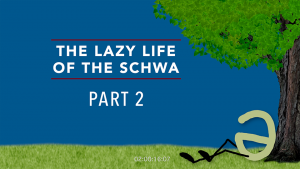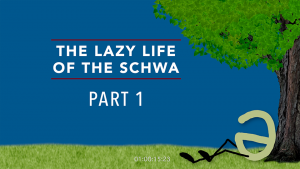Voice to Word Consulting Focuses on Clear Communications for the North American & British Contexts

The Dilemma – What is “Correct” English?
I am often asked, “Is that ‘correct’ English?” It is not a simple question to answer. I have thought about this often but recently I was reminded of it again as I listened to the audio version of Between the World and Me. Written and read by Ta-Nehisi Coates, the book...

Video Post on The Schwa: The Lazy Vowel – Part 5
If you’ve been watching my latest video series, you’ll understand that the schwa refers to the reduced vowel sound which English speakers use everywhere. But did you know that this reduction can also affect complete words that are not stressed in a sentence? As the...

Video Post on The Schwa: The Lazy Vowel – Part 4
Why is the schwa so important? As the most common vowel sound in the English language, the schwa can sometimes tell you if a word is a noun or a verb. Did you know RE-cord (the noun) is pronounced differently than re-CORD (the verb)? And there are many like that....

Video Post on The Schwa: The Lazy Vowel – Part 3
In this video, we introduce you to shifting stress related to changing the suffix – for example pho-TO-graphy vs photo-GRA-phic. I know it can be a lot to take in but if you watch the entire series, hopefully it will all come together. I suggest that you also watch...

Video Post on The Schwa: The Lazy Vowel – Part 2
Welcome to Part 2 of my series on the “schwa”! What is the schwa? Only the most common vowel sound in the English language. If you haven't already, I suggest you watch Part 1. Each video looks at one aspect of the schwa and how it influences our speech in different...

Video Post on The Schwa: The Lazy Vowel – Part 1
What is the SCHWA? The SCHWA is the reduced vowel sound in English which makes your language sound more natural, like a native speaker. Each part of the series looks at the role of the schwa in different contexts. Here is a summary of the five parts: 1. English is a...

Video Post on Travel Idioms
This is the last of my series on common idioms that are useful to know and use at work. There are 7 videos in total. We have covered idioms involving animals, food, movement, violence, weather, sports, and now travel. Today I have 4 travel idioms to share with you:...

Video Post on Sports Idioms
Our idioms come from our histories, our conditions, our culture and our activities. In North America, we have a lot of drinking idioms, horses and guns idioms, weather idioms and, what I am sharing this week, sports idioms. Sometimes, if you know how to play the game,...

Video Post on Weather Idioms
Next in my series on common idioms, I focus on weather idioms. Here are the three I will discuss in the video: Up in the air Under the weather When it rains, it pours Please share other weather idioms you use and find useful to get a clear message across in few words....

Video Post on Seemingly Violent Idioms
Here's another short video on common idioms you should be familiar with. These may sound violent or aggressive, but they aren’t, and they are common and useful. Kill two birds with one stone Break a leg When push comes to shove If looks could kill Do you have any...

